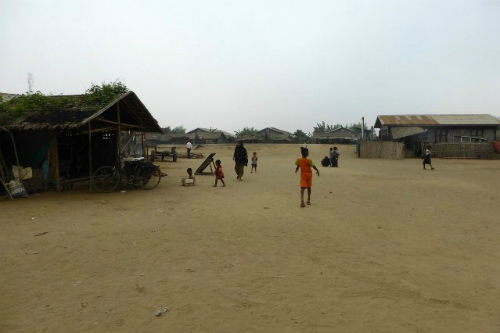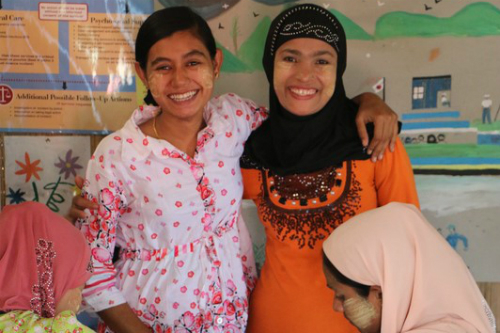News
Searching for a safe space: The story of a young Rohingya woman displaced in Myanmar
- 19 May 2016
News
RAKHINE, Myanmar – Khin Me Me Htun was 22-years old when a wave of inter-communal violence swept across the state of Rakhine in 2012. At the time, she had just graduated with a degree in English from Sittwe University, and was planning to move to Yangon to start post-graduate studies and pursue her long-time dream of a career in diplomacy.
Then one night, riots broke out in her town, Sittwe, and her carefully planned future was upended. She saw her neighbours being beaten with steel sticks and stabbed with knives. And she watched as her father nearly died from a beating.
“I could see my father’s brain,” she says. “I saw my friend die from a knife wound. There was blood everywhere. That was the last time I saw my neighbourhood.”
Khin Me is one of the approximately 1 million people in Myanmar who self-identify as Rohingya, a Muslim minority that came into international focus in 2015 when thousands fleeing persecution were left floating at sea in rickety boats, unable to find a country willing to grant them refuge.
And today, four years after she was forced to flee her home, Khin Me and 120,000 others affected by the 2012 conflict remain displaced within Myanmar’s borders.
Most live in restricted zones, often just kilometres from their home villages and towns, but the zones’ perimeters are policed, and they are barred from leaving or returning home.
Inside the walls, they are shut off from jobs, education and health care, including sexual and reproductive health services. Most struggle to survive day to day, and, while there is no data available from the camps, anecdotal evidence suggests that women and girls in the zones faced an increased risk of sexual and gender-based violence.

As she scrolls through photos on her phone of her old, more urban life in Sittwe – going to the cinema, goofing around with friends, Khin Me discusses living in the restricted zone. “At first, it was strange,” she says, her demeanour quiet and serious and very different from the smiling, light-hearted Khin Me floating by in her photos. “I cannot wear trousers here. Women don’t go to the tea stall. And there is nowhere to borrow or buy books.”
In the camps, water is collected from a shared pump, electricity is intermittent and the latrines are outdoors. For many women and girls, venturing out to use the latrines at night is the time they most fear experiencing sexual assault. However, the huts where most live have no locks, and even staying inside after dark is no guarantee of protection.
In addition, families live day after day, year in and year out, in these small, stiflingly hot makeshift huts, without privacy, and the conditions breed despair and frustration that contribute to domestic violence.
In response to the displacement, UNFPA has established 15 Women and Girls Centres in Myanmar, in partnership with the International Rescue Committee and the Metta Development Foundation, to provide women and girls with social support, information about sexual and reproductive health, family planning, psychosocial counselling, other violence-related services and transport to a nearby hospital for those in need of medical attention. In 2015 alone, 16,000 women and girls accessed the centres.
All staff members at these safe spaces are themselves internally displaced women and girls, and the work not only provides them with financial security, but also allows them to use their first-hand knowledge of life in the camps to shape and improve the response to gender-based violence.

Khin Me is among those on staff at the seven centres in Rakhine. She says her position as a response manager gives her a sense of purpose. And as she sits there, talking and laughing with her colleagues and the women visiting the centre, she begins to look more like the playful young woman in her photos.
“I feel that my work really matters,” she says. “Many of the women who come here have little or no education, and we teach them not only about gender-based violence, but also about health and sanitation.”
However, despite the fulfilling work, Khin Me says she constantly teeters between hope and hopelessness.
To date, there has been little progress towards an agreement or reconciliation that would allow Khin Me and the rest of the Muslim community to return to their homes. And in the centre of Sittwe, there remains only a vacant lot where her family’s house and tea stop once stood.
But Khin Me still holds out hope for returning there. “My dream has changed,” she says. “I don’t want to go to Yangon anymore, or to America, or anywhere else in the world. I just want to go home.”